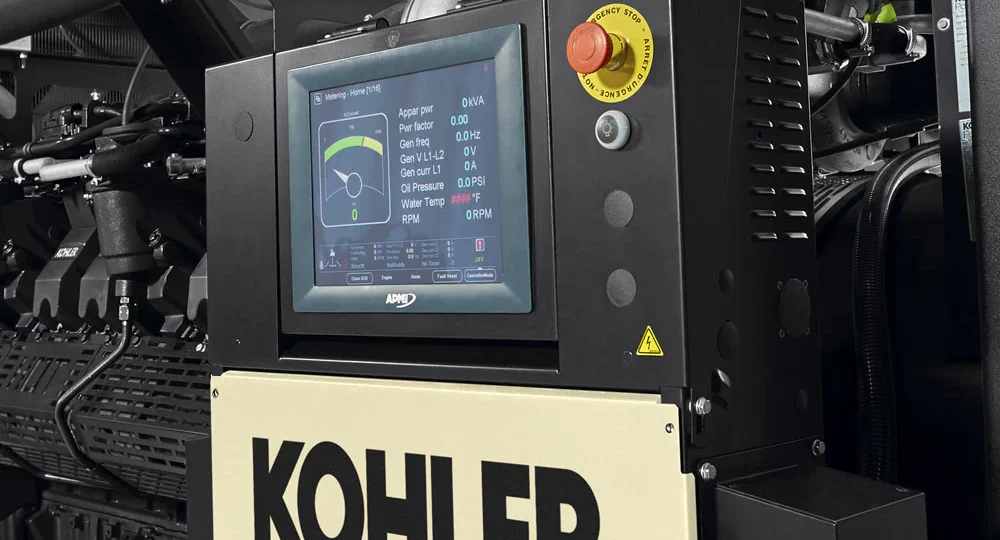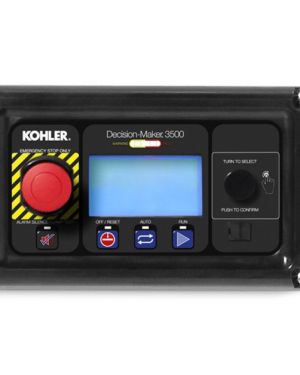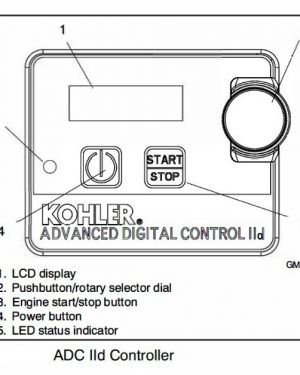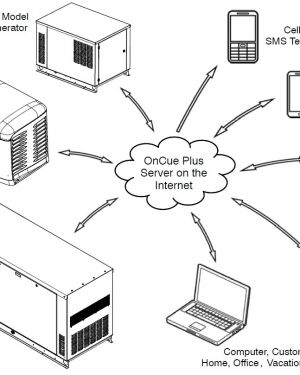The modern world is heavily reliant on electricity, and power generators play a pivotal role in ensuring a steady supply of this essential resource. Behind the scenes, a critical component known as the power generator controller lies at the heart of this process. In this article, we delve into the intricacies of power generator controllers, shedding light on their functions, components, and the critical role they play in managing and optimizing power generation.
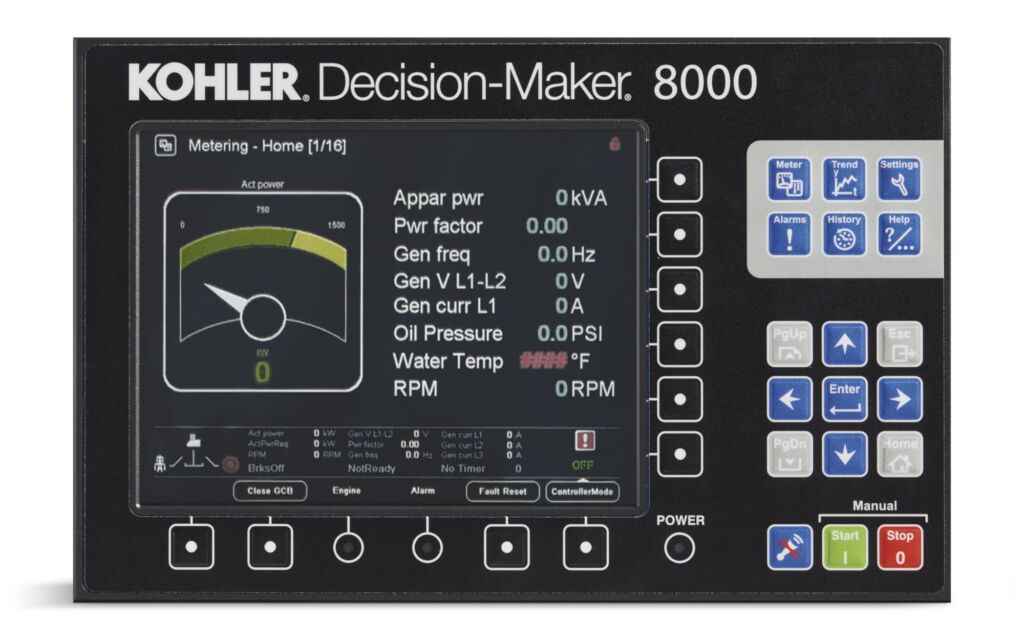
The Power Generator Controller. Definition and Purpose
A power generator controller is an essential component of any power generation system. It is a sophisticated device that plays a vital role in the overall operation and management of a generator. The purpose of a power generator controller is to monitor, control, and protect the generator, ensuring its optimal performance and longevity.
At its core, a power generator controller acts as the brain of the generator, overseeing and coordinating various functions. It receives inputs from sensors and monitors critical parameters such as voltage, current, frequency, and temperature. These inputs provide real-time data about the generator’s health and performance, enabling the controller to make informed decisions.
One of the primary functions of a power generator controller is to start and stop the generator automatically. It detects the need for power and initiates the generator’s startup sequence, ensuring a seamless transition from the grid to the generator. Conversely, when the need for power diminishes, the controller halts the generator, preventing unnecessary fuel consumption.
Additionally, the power generator controller safeguards the generator by continuously monitoring its operating conditions. It detects faults, irregularities, or abnormalities and responds swiftly to protect the equipment from potential damage. For instance, if the controller detects abnormal fuel pressure or high temperatures, it can trigger an alarm to notify operators or even shut down the generator to prevent further problems.
The power generator controller also ensures the synchronization of multiple generators within a power system. It synchronizes the voltage and frequency of each generator before connecting them to the grid, maintaining stability and preventing potential damage to equipment.
Furthermore, a power generator controller enables remote monitoring and control. Through integrated communication interfaces, operators can access real-time data and remotely control the generator, regardless of their physical location. This feature allows for efficient troubleshooting, maintenance, and optimization of generator performance.
To enhance the reliability and robustness of power generation systems, advanced power generator controllers incorporate intelligent features such as load sharing, load shedding, and predictive maintenance. These features optimize the system’s efficiency, distribute loads evenly among multiple generators, and anticipate potential failures, reducing downtime and maximizing uptime.
The goal: Monitoring and controlling operational Parameters
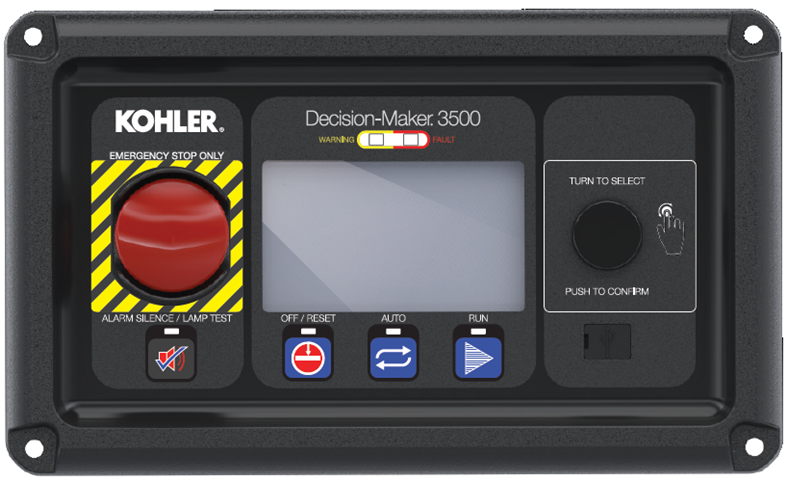
Power generator controllers are responsible for monitoring and controlling parameters such as voltage, frequency, and load. They continuously adjust these variables to meet the electrical demands of a given system, ensuring a stable and reliable power output.
Here are the most common parameters that a power generator controller is responsible for monitoring and controlling:
- Start/Stop Control: The power generator controller has the capability to initiate and halt generator operation either manually or based on a preconfigured schedule. The controller is responsible for initiating the start-up sequence of the generator when needed and ensuring a safe shut-down when the power generation is no longer required. This process is essential for prolonging the lifespan of the generator and minimizing fuel consumption.
- Fuel Level Monitoring: The controller continuously tracks and provides real-time data on the fuel tank level, promptly alerting any issues that require attention.
- Generator/ATS Control and Monitoring: The controller can be seamlessly connected to the Automatic Transfer Switch (ATS) generator relays, enabling it to initiate and terminate power generation as necessary.
- Engine Operation Data: By closely monitoring sophisticated generator control modules, the controller collects and analyzes vital engine operation information such as fuel level, oil temperature, battery voltage, coolant level, and other essential parameters.
- Generator Power Data: The controller meticulously monitors and captures data related to generator power, including voltage and current across all phases, total power output in kilowatts (Kw), and other significant metrics.
- Apparent Power: This parameter is quantified in MVA (Mega-volt-amperes), representing the total power magnitude considering both real and reactive power components.
- Real Power: Measured in MW (Megawatts), real power solely signifies the actual power generated or consumed.
- Power Factor (pf): This unitless measure indicates the ratio between real power and apparent power, providing insights into the efficiency and performance of the power generator system.
- Reactive Power: Expressed in MVARs (Mega-volt-amps reactance), reactive power refers to the power component that oscillates between the generator and the load, contributing to the overall power system stability.
- Stator Terminal Voltage (Vt): This term denotes the alternating voltage at the stator terminals of the generator, reflecting the electrical potential difference.
Load Management: One of the primary functions of a power generator controller is load management. It continuously monitors the power demand and adjusts the generator’s output to match the load, ensuring efficient use of resources and preventing overloads.
- Fault Detection and Protection: Power generator controllers are equipped with fault detection algorithms that can identify irregularities in the generator system. They promptly respond by initiating protective measures to prevent damage and downtime.
- Remote Monitoring and Control: Thanks to communication modules, power generator controllers allow for remote monitoring and control, granting operators the flexibility to manage generators from afar. This is especially valuable for applications in remote or inaccessible locations.
- Data Logging and Analysis: Power generator controllers often include data logging capabilities, enabling operators to record and analyze historical performance data. This information can be invaluable for optimizing power generation strategies and identifying potential issues.
- Energy Efficiency: By constantly adjusting generator parameters to match the load, power generator controllers contribute to improved energy efficiency, reducing fuel consumption and operational costs.
These parameters play a crucial role in ensuring the smooth, efficient, and secure operation of a power generator. They allow the generator controller to conduct system diagnostics, monitor various functions, and keep track of the current status of the generator.
How does a power generator controller do its job?

In order for a controller to function correctly and fulfill its objective, it uses a control structure that we detail below:
Sensing Devices
Power generator controllers rely on an array of sensing devices, including voltage and current sensors, to gather real-time data on the electrical parameters. These sensors feed crucial information to the controller, enabling it to make informed decisions regarding power generation.
Here are some of the key sensing devices:
- Voltage Sensors: These devices sense or identify and react to certain types of electrical signals. They are used to monitor the voltage levels in the generator and ensure they are within the acceptable range.
- Frequency Sensors: These sensors sense the frequency of the bus bar and compare it with tie line power frequencies. The output of this is an area control error which is sent to the speed changer through an integrator. The speed changer gives the reference speed to the governor.
- Current Sensors: Similar to voltage sensors, current sensors are used to monitor the current levels in the generator. They can detect any abnormal changes in current and trigger protective measures.
- Temperature Sensors: These sensors monitor the temperature of various components of the generator, such as the engine, to prevent overheating.
- Fuel Level Sensors: These sensors provide real-time fuel tank level readings and send alerts for anything that needs attention.
- Oil Pressure Sensors: These sensors monitor the oil pressure in the generator’s engine. If the oil pressure drops below a certain level, the sensor will trigger an alarm.
These sensing devices play a crucial role in maintaining the efficient and safe operation of a power generator.
SKU: GM92086
Contact us to confirm product availability before adding to cart.
SKU: GM83744
Contact us to confirm product availability before adding to cart.
Contact us to confirm product availability before adding to cart.
Microcontroller Unit (MCU)
At the heart of every power generator controller is a Microcontroller Unit (MCU). This advanced piece of hardware processes the data received from sensing devices, executes control algorithms, and issues commands to the generator system. It serves as the “brain” of the controller.
A MCU is a compact integrated circuit designed to govern a specific operation in an embedded system. Here are some technical details about it:
System on Chip (SoC): An MCU is usually a system on chip (SoC), meaning its processor core, memory, and IO are all inside one discrete package.
Is a generic component: MCU are generic, so to use them for specific functions they require supporting hardware and software.
Control: The MCU based load sharing and control system is a device that automatically controls overload on a generator by sharing power and cut off supply once the power consumption exceeds the amount of power supplied.
In the context of a power generator controller, the MCU can be used to make an Electronic Control Unit (ECU) by integrating it on a circuit board with appropriate physical connectors, custom software, power circuitry, and mechanical packaging. However, an ECU could instead use a mini-PC, or purely analogue hardware.
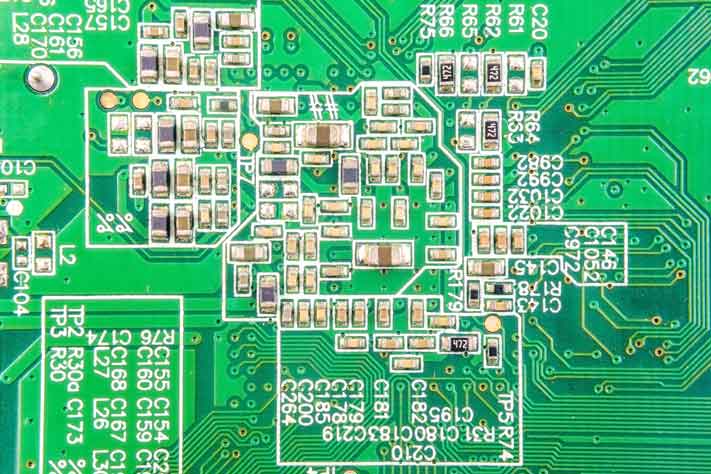
Human-Machine Interface (HMI)
A user-friendly interface allows operators to interact with the power generator controller. This interface can be in the form of a touchscreen display or a software application, enabling users to configure settings, monitor performance, and receive critical system alerts.
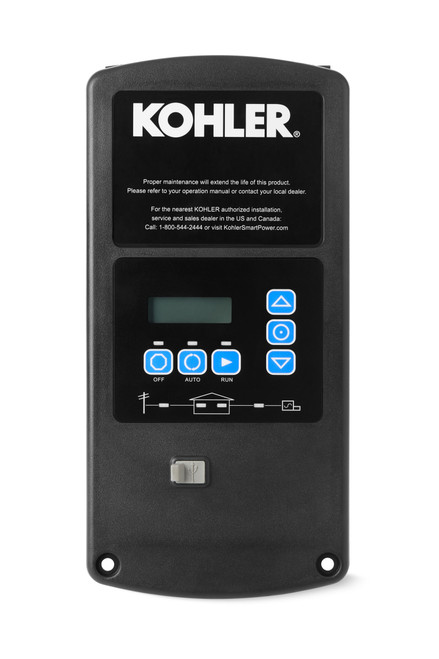
Communication Modules
In today’s interconnected world, power generator controllers can have feature communication modules such as Ethernet, Wi-Fi, or cellular connectivity. These modules facilitate remote monitoring and control, enabling real-time adjustments and data access from anywhere in the world.
Communication modules in power generator controllers are crucial for remote monitoring and control. They allow for easy connection to the controller and authorized personnel for maintaining the equipment. Here are some technical details about these modules:
- Ethernet Module: An Ethernet module provides a wired connection for remote monitoring and control of the gen-set controllers. It provides access to various gen-set values like engine values, generator, load, and Mains electrical values, alarms, and history from anywhere.
- 4G Module: A 4G module provides a wireless connection for remote monitoring and control of the gen-set controllers. It also enables tracking of the gen-set’s exact position, helping to optimize its uptime and reduce maintenance costs.
- Cellular Router: This device enables one or multiple controllers equipped with an Ethernet interface to communicate remotely via the internet and access cloud services.
These communication modules provide a robust and reliable method for remote monitoring and control of power generator controllers.
Future Trends and Innovations
Looking ahead, the world of power generator controllers is poised for exciting developments. Technological advancements and innovation continue to shape the landscape, promising more efficient and sustainable power generation. Here are some emerging trends and innovations in the field of power generator controllers:
Integration of Artificial Intelligence (AI)
The integration of AI and machine learning algorithms into power generator controllers is on the horizon. AI can enhance predictive maintenance capabilities, allowing controllers to anticipate and address potential issues before they lead to costly breakdowns.
Enhanced Cybersecurity Measures
As power generator controllers become more connected, the need for robust cybersecurity measures is paramount. The protection of critical infrastructure from cyber threats is a growing concern, and manufacturers are investing in security features to safeguard these systems.
Decentralized Energy Systems
The rise of decentralized energy systems, including renewable energy sources like solar and wind, is changing the way power generator controllers operate. They must adapt to coordinate the integration of these intermittent energy sources into the grid efficiently.
Energy Storage Integration
Energy storage systems, such as batteries, are gaining prominence. Power generator controllers are evolving to manage the integration of these storage solutions seamlessly, providing backup power during outages and optimizing energy usage.
Smart Grid Integration
The concept of a smart grid, which enables two-way communication between power generators and consumers, is becoming a reality. Power generator controllers are a crucial part of this ecosystem, ensuring efficient energy distribution and load balancing.
Environmental Sustainability
Sustainability is a top priority in today’s world. Power generator controllers are evolving to support cleaner and greener energy sources, contributing to reduced emissions and a more eco-friendly power generation landscape.
Redundancy and Resilience
Ensuring the reliability of power generator controllers is a continuous focus. Redundancy features and fault-tolerant designs are being implemented to maintain power supply even in challenging conditions.
The power generator controller, often operating behind the scenes, is a silent hero in the world of power generation. It plays a pivotal role in ensuring a steady and reliable supply of electricity while adapting to the changing landscape of technology and sustainability. As we embrace the future with emerging trends and innovations, the power generator controller remains a linchpin in our quest for efficient, sustainable, and resilient power generation. Its ongoing evolution will undoubtedly shape the energy landscape for years to come.
Don’t hesitate to reach out for any further information or assistance regarding to power generator controllers. Contact us at the phone number +1.954.657.7777, or write to us at info@bnhgenerators.com, and we will gladly help you.


